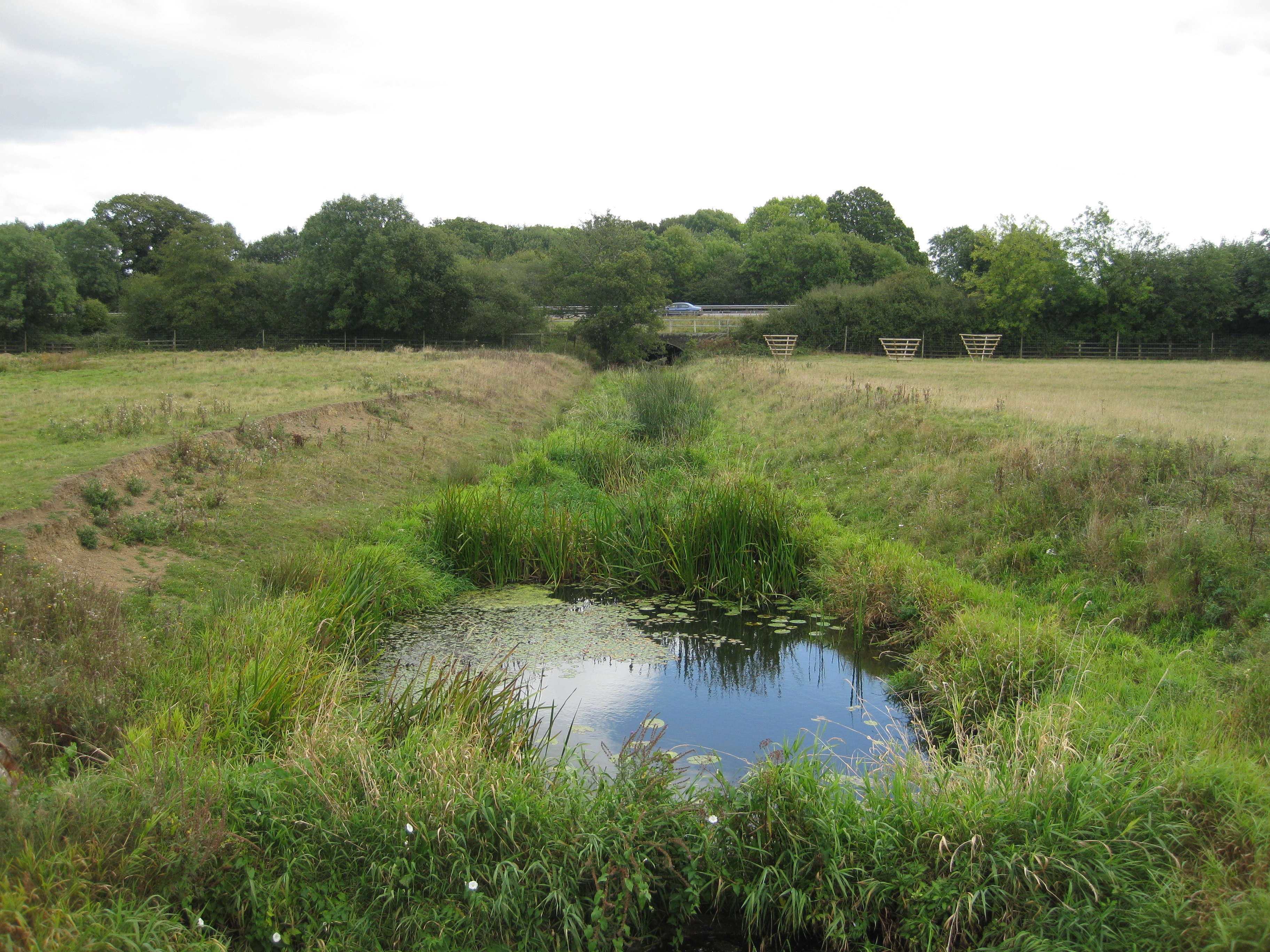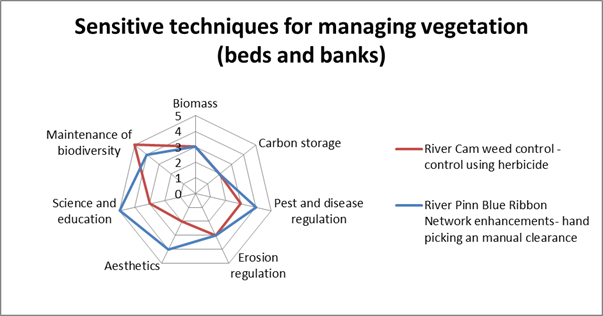River banks and beds and channel margins support a range of important habitats for plants, invertebrates and other aquatic organisms. If left unmanaged, plant growth can become an issue by:
- Choking river channels - reducing flow conveyance and increasing flood risk
- Destabilising artificial banks through root penetration
- Reducing the amount of light that reaches the river and reducing habitat diversity
 It is therefore important that vegetation that grows on the river bed and banks is managed carefully so as to not damage important habitat. River managers must therefore select management techniques which preserve as much of these natural habitats as possible (whilst still fulfilling their management objectives).
It is therefore important that vegetation that grows on the river bed and banks is managed carefully so as to not damage important habitat. River managers must therefore select management techniques which preserve as much of these natural habitats as possible (whilst still fulfilling their management objectives).
Techniques
There are a range of techniques that can be used to implement this activity, depending upon the type and maintenance requirements of the water body in which it is going to be applied:
- Retention of marginal habitats (including fallen trees and branches) unless they compromise flow conveyance
- Use of sensitive vegetation management techniques which do not impact upon marginal habitats. These could include hand-picking or selective cutting of in-channel and bankside vegetation, coppicing or pollarding trees instead of felling them, only cutting the centre of the channel, and using herbicides to control vegetation instead of cutting
- Use of boat-mounted vegetation cutting or herbicide spraying equipment to allow work to be undertaken in the main channel without disturbing the margins and banks
- Change the frequency of maintenance activities, so habitats have time to recover before they are disturbed again
Benefits
Maintenance activities which minimise the disturbance to bed and bank habitats can deliver a wide range of benefits, including:
- Direct ecosystem benefits associated with the retention of bed, bank and marginal habitats and the maintenance of biodiversity
- Natural erosion protection
- Aesthetic improvements to the watercourse, by providing a more natural look
- Benefits for any commercial fisheries in the watercourse, by providing natural habitats for fish and their prey
- Reduced costs of appropriate vegetation management techniques
Case Study Benefits
This diagram displays a comparison of benefits scores (using a high-level ecosystem service assessment methodology) associated with the techniques used in each case study. More details on the methodology can be found here.